Heat lamps make me nervous, they always have. Every year, news stories recount tales of homes and chicken coops burning down as a result of a heat lamp. Whether from falling, being knocked over or simply swinging into contact with a flammable object, the traditional heat lamp is just plain hazardous even when vigilantly employed. Regardless of how carefully it is hung or how many different ways it is tethered, I never get past that gnawing feeling that something beyond my control could result in catastrophe.
The fire in the photo below resulted from a heat lamp that fell. There were 2 goats, 3 goslings, 3 ducklings and approximately 13 chicks in the area of the heat lamp who would have perished if the chicken-keeper hadn’t come upon the scene when she did.
Heat lamp reflectors, ordinarily made of aluminum, commonly include a hangar and a clamp. The problem with the design is that there are several points at which its parts can fail from the clamp to the wire hangar and the wing nut that connects the clamp to the lamp.
Meet the original baby chick warmer: the hen. A chicken’s normal body temperature ranges between 103°-107° F. Observing mama hens interact with their babies in my backyard has completely convinced me that chicks simply do not need as much heat as we are led to believe. In this photo, my Silkie surrogate mama, Freida, took her 3 week old chicks out for a romp in the run in 29°F temperatures.
We are all taught ‘The Formula” for brooding baby chicks: 90-95° Fahrenheit for the first week of life, decreasing by five degrees each week thereafter. If I were a slave to The Formula, I would have called CPS (chick protective services) and reported Freida immediately, after whisking the chicks indoors to toast under a an 80° french-fry lamp, of course. But I am no longer a slave to the formula and Freida never has been.When her chicks got chilly, they simply scurried underneath her.
Until fairly recently, there weren’t too many options for keeping baby chicks warm. I wish I had known earlier in my chicken-keeping experience that Brinsea Products offers the EcoGlow Brooder, which employs the same concept as a mama hen. Just as with a hen, the chicks will spend most of their time under the EcoGlow for the first couple of days, they’ll peek out from underneath occasionally, gradually spending more and more time away from it. They will scoot around to eat, drink and play chick games, and return when necessary. Before too long, and much sooner than you’d expect, they spend most of their time away from the brooder.
The EcoGlow operates on the principle of radiant heat, which passes through air without warming it. Only a solid object will absorb and be warmed by radiant heat, so don’t expect to put your hand underneath it briefly and determine whether or not it is warm enough for the chicks. A thermometer will measure the air temperature but not the radiant heat and will usually show 5° to 10°F lower than the temperature felt by the chicks.
In my experience the advantages of the EcoGlow over a heat lamp are:
- it’s more like mama hen, chicks snuggle up to the unit when they feel it necessary
- no fire hazard
- uses less electricity (14 watts vs. 250 watts with a heat lamp)
- no risk of pasty butt from overheating
- no disruptive light, allowing for natural, diurnal wake/sleep cycles
- height adjustable for growing chicks
- no fussy machinations required to hang the heat source, making brooder location more flexible
A sheet of Contact paper applied to the top makes clean-up a breeze. The top of the EcoGlow can be slippery with or without Contact paper, I use rubber shelf liner on top of the EcoGlow to avoid risk of spraddle leg in my chicks. When the chicks no longer use the EcoGlow, peel off the shelf liner and Contact paper. No scrubbing required!
Kathy Shea Mormino
Affectionately known internationally as The Chicken Chick®, Kathy Shea Mormino shares a fun-loving, informative style to raising backyard chickens. …Read on


shop my SPONSORS
Heat lamps make me nervous, they always have. Every year, news stories recount tales of homes and chicken coops burning down as a result of a heat lamp. Whether from falling, being knocked over or simply swinging into contact with a flammable object, the traditional heat lamp is just plain hazardous even when vigilantly employed. Regardless of how carefully it is hung or how many different ways it is tethered, I never get past that gnawing feeling that something beyond my control could result in catastrophe.
The fire in the photo below resulted from a heat lamp that fell. There were 2 goats, 3 goslings, 3 ducklings and approximately 13 chicks in the area of the heat lamp who would have perished if the chicken-keeper hadn’t come upon the scene when she did.
Heat lamp reflectors, ordinarily made of aluminum, commonly include a hangar and a clamp. The problem with the design is that there are several points at which its parts can fail from the clamp to the wire hangar and the wing nut that connects the clamp to the lamp.
Meet the original baby chick warmer: the hen. A chicken’s normal body temperature ranges between 103°-107° F. Observing mama hens interact with their babies in my backyard has completely convinced me that chicks simply do not need as much heat as we are led to believe. In this photo, my Silkie surrogate mama, Freida, took her 3 week old chicks out for a romp in the run in 29°F temperatures.
We are all taught ‘The Formula” for brooding baby chicks: 90-95° Fahrenheit for the first week of life, decreasing by five degrees each week thereafter. If I were a slave to The Formula, I would have called CPS (chick protective services) and reported Freida immediately, after whisking the chicks indoors to toast under a an 80° french-fry lamp, of course. But I am no longer a slave to the formula and Freida never has been.When her chicks got chilly, they simply scurried underneath her.
Until fairly recently, there weren’t too many options for keeping baby chicks warm. I wish I had known earlier in my chicken-keeping experience that Brinsea Products offers the EcoGlow Brooder, which employs the same concept as a mama hen. Just as with a hen, the chicks will spend most of their time under the EcoGlow for the first couple of days, they’ll peek out from underneath occasionally, gradually spending more and more time away from it. They will scoot around to eat, drink and play chick games, and return when necessary. Before too long, and much sooner than you’d expect, they spend most of their time away from the brooder.
The EcoGlow operates on the principle of radiant heat, which passes through air without warming it. Only a solid object will absorb and be warmed by radiant heat, so don’t expect to put your hand underneath it briefly and determine whether or not it is warm enough for the chicks. A thermometer will measure the air temperature but not the radiant heat and will usually show 5° to 10°F lower than the temperature felt by the chicks.
In my experience the advantages of the EcoGlow over a heat lamp are:
- it’s more like mama hen, chicks snuggle up to the unit when they feel it necessary
- no fire hazard
- uses less electricity (14 watts vs. 250 watts with a heat lamp)
- no risk of pasty butt from overheating
- no disruptive light, allowing for natural, diurnal wake/sleep cycles
- height adjustable for growing chicks
- no fussy machinations required to hang the heat source, making brooder location more flexible
A sheet of Contact paper applied to the top makes clean-up a breeze. The top of the EcoGlow can be slippery with or without Contact paper, I use rubber shelf liner on top of the EcoGlow to avoid risk of spraddle leg in my chicks. When the chicks no longer use the EcoGlow, peel off the shelf liner and Contact paper. No scrubbing required!



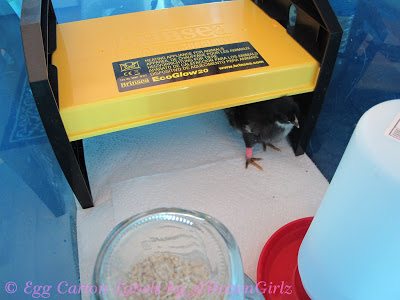
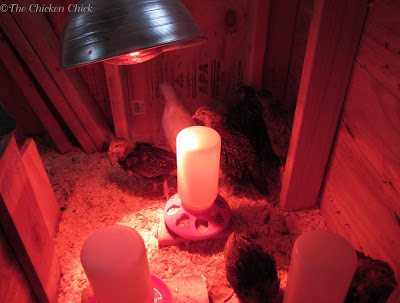
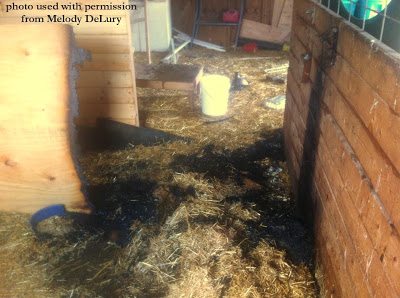
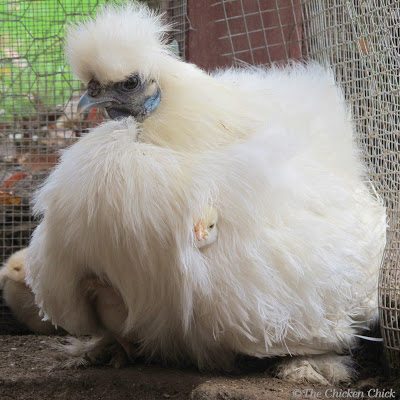
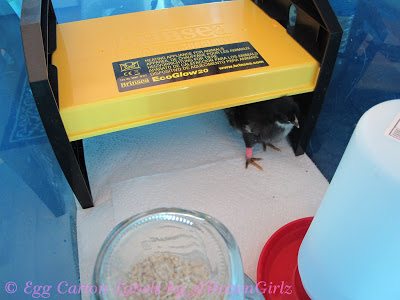
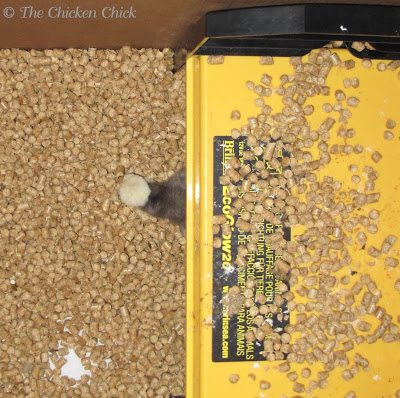

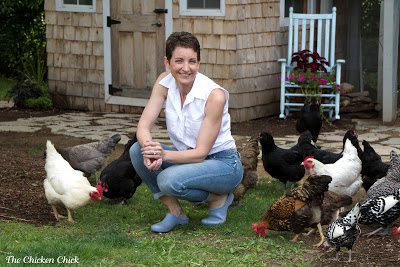

























i currently have 13 call duck eggs in the bator and i am such a nervous mama, i have bean asking my mom for eggs for 4 months now and my persistence finally payed off! i would love to buy one of these myself but don't have the money. ( all of the supplies for raising them are coming out of mont i earned from working at a camp, so its a little tight) but at the same time i am worried about fire and the light in my room, (not getting enough sleep …exc) sorry for babbling for so… Read more »
Awesome going to have to get one of these , thanks.
hello guys,can I ask what is the perfect size for each breeding nest?
Hi There, I love my EcoGlow 20 that I got as a result of this blog post. I do have a quick question that is probably more nervous mama hen than any thing else. I have 7 – 2 1/2 week old chicks. Their brooder is a puppy play pen located in our enclosed porch. First let me say that they appear to be active, healthy, happy, normal chicks (but what do I know?). Our weather is hot 90's by day, warm 60's by night. occasionally I will see the chicks under the warmer in the day time (mostly they… Read more »
good day to you!